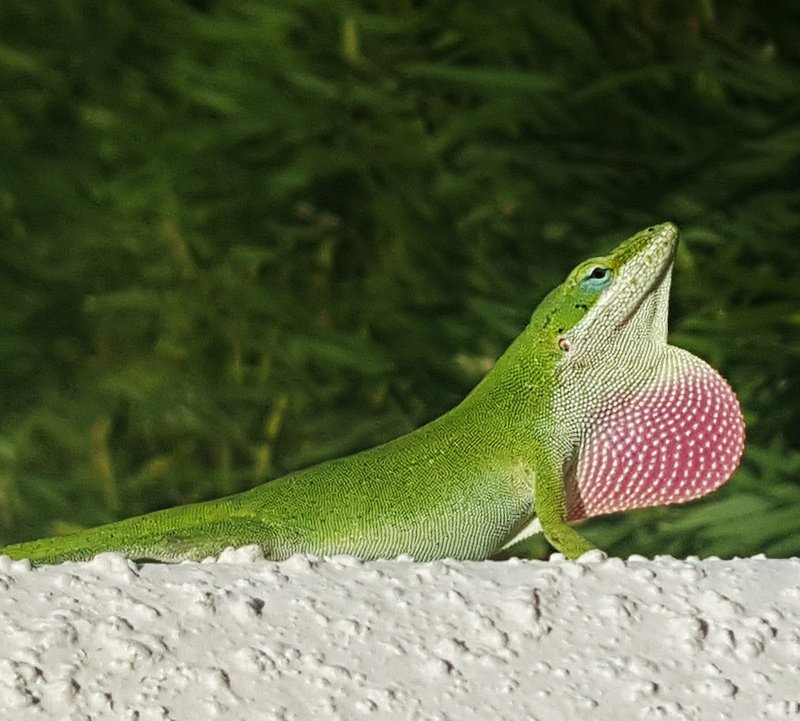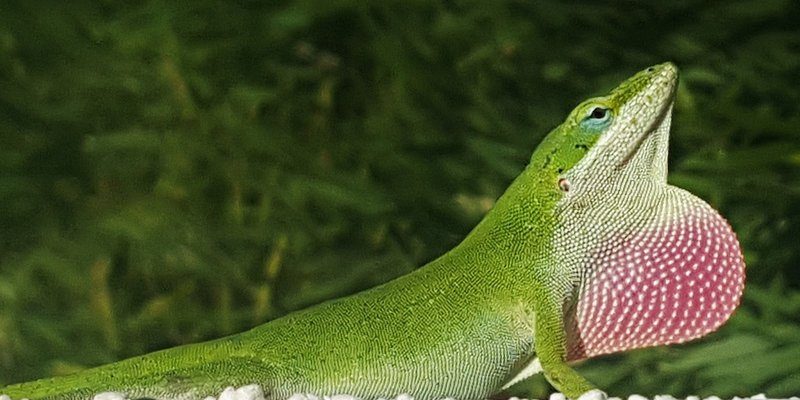
Anole lizards belong to the family Polychrotidae, which includes more than 400 different species. These lizards can be found in a variety of habitats, primarily in warmer climates. Think of them as the jet-setters of the reptile world, as they’ve adapted to a range of environments. Whether it’s tropical rainforests, urban gardens, or even coastal areas, anoles thrive in many locations. So, grab a cup of coffee, and let’s take a closer look at where you can find these fascinating creatures around the world.
North America: The Diverse Habitats of Anoles
In the United States, *anole* lizards are most commonly found in the southeastern region, particularly in Florida. The Green Anole (*Anolis carolinensis*) is widely recognized and is often referred to as the “American chameleon” due to its ability to change color somewhat. It prefers humid, wooded areas, where it can bask in the sun or hide among the leaves.
You might be surprised to learn that up north, *anoles* are also found in places like Texas and Louisiana. In these regions, they often inhabit gardens, parks, and even buildings, showcasing their remarkable adaptability. If you’ve ever visited a southern state, you might have caught a glimpse of these little guys darting across fences or lounging on sunny surfaces.
Beyond the United States, *anole* lizards are also present in the Caribbean islands. They’re a vital part of the ecosystem there. Different species, like the *Cuban Green Anole* (*Anolis porcatus*), have evolved to suit the specific environments of their islands, from lush forests to rocky areas.
Central America: The Lush Landscapes of Anole Lizards
Traveling south, *anole* lizards thrive in Central America, where the climate is typically warm and humid—perfect for these reptiles. Countries like Costa Rica and Panama are teeming with different species of *anoles*, many of which are unique to those regions.
In the rainforests of Costa Rica, you can find the Brown Anole (*Anolis sagrei*), which is known for its adaptability to various habitats. These lizards can often be seen basking on tree branches or scurrying across the forest floor. The incredible biodiversity of Central America provides the perfect backdrop for these lizards, allowing them to thrive in their natural habitats.
What’s interesting here is that the *anoles* in these regions often display vivid colors and unique patterns, making them stand out among the lush greenery. This diversity helps them not only to blend in with their surroundings to avoid predators but also to attract mates during the breeding season.
South America: Anole Diversity in the Tropics
In South America, *anole* lizards are found in various environments, from tropical rainforests to drier scrublands. Countries like Colombia and Brazil host several species of *anoles*, each adapted to local conditions.
For instance, the Amazon Rainforest is home to numerous *anole* species, each occupying different niches. Some prefer the forest canopy, while others are found closer to the ground. This specialization allows them to coexist and take advantage of the diverse resources available in such a rich ecosystem. As you explore these areas, you might notice how these lizards are often seen perched on branches or basking on rocks, showcasing their adaptability to different altitudes and climates.
Additionally, the tropical savannahs in Brazil are home to yet another group of *anoles*. These lizards have adapted to the hotter, drier conditions, showcasing the remarkable resilience of the *anole* family. They highlight just how well these lizards can adapt to their environment.
The Caribbean: Anole Haven
The Caribbean islands serve as a haven for *anole* lizards, with many species developing unique traits on different islands. For example, the Jamaican Anole (*Anolis grahami*) has distinct adaptations that allow it to thrive in Jamaica’s varied environments, from coastal areas to mountainous regions.
Each island in the Caribbean has its own set of *anole* species, which often showcase a mix of vibrant colors and patterns. This diversity is a result of evolutionary processes in isolated environments, which help the lizards adapt to specific conditions. As you wander through the islands, the sight of a brilliant green or blue *anole* sunbathing in the warm sun is a common—and delightful—sight.
The adaptability of *anoles* in the Caribbean is a great reminder of the importance of maintaining biodiversity. These lizards play a crucial role in their ecosystems, helping to control insect populations and acting as prey for larger predators.
Europe and Asia: Anole Extinction and Overview
While *anole* lizards are not native to Europe and most parts of Asia, there have been introductions and sightings in some areas. However, most of their natural habitats lie in warmer regions. In places like Florida, some *anole* species have even established populations outside their native ranges, showcasing their adaptability—and also raising questions about their impact on local ecosystems.
In Europe, the climate is generally too cold for *anoles* to thrive naturally. However, you might find some enthusiasts keeping these exotic lizards as pets, providing them with environments resembling their natural habitats. In Asia, particularly in parts of Southeast Asia, you may encounter *anole* species that are found in similar climates, but they are not as commonly recognized as in the Americas.
Here’s the thing: while we might not find *anoles* roaming freely in European or most Asian countries, their fascinating ability to adapt to different environments still makes them a subject of interest for scientists and reptile lovers alike.
Anole lizards truly are a remarkable group of reptiles with a global presence. From the warm, sunny gardens of Florida to the lush rainforests of Central America, these little lizards showcase a variety of adaptations that allow them to thrive in diverse environments. Their colorful appearances and unique habits not only captivate those who spot them but also highlight important ecological roles in their respective habitats.
By understanding where *anole* lizards are found, we can appreciate the importance of biodiversity and the delicate balance of ecosystems around the world. Whether you’re a nature enthusiast, a budding herpetologist, or just someone curious about these fascinating creatures, knowing more about their habitats helps us protect and preserve the diversity of wildlife for future generations. So, next time you see an anole lizard, take a moment to appreciate the journey it has taken to be right there in front of you!

